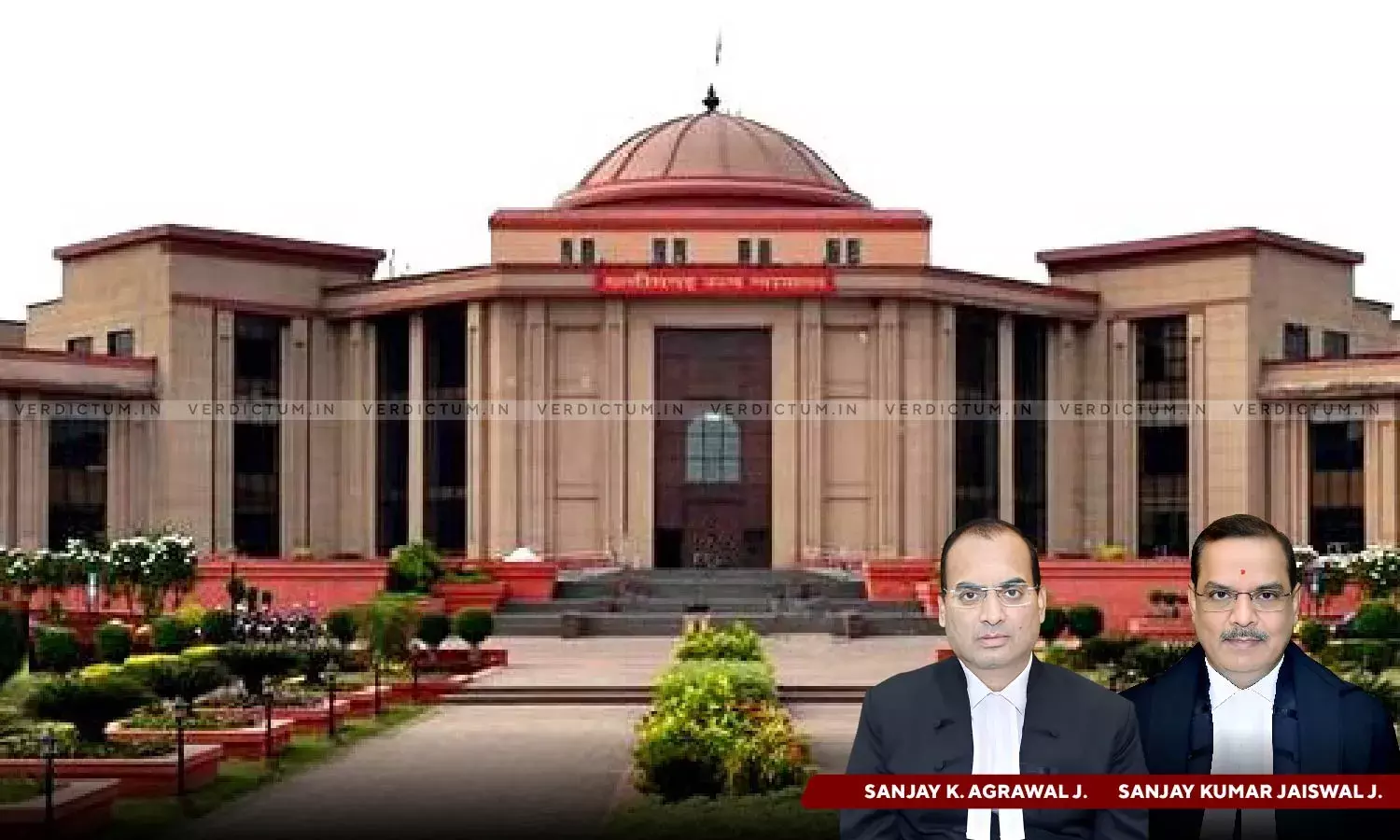Only Inmates Of Jail Included In Test Identification Parade; Supreme Court Guidelines Not Followed: Chhattisgarh HC Acquits 4 Men In Gang Rape Case
The Chhattisgarh High Court acquitted four men in a gang rape case on the ground that the guidelines by the Supreme Court for the Test Identification Parade (TIP) were not followed.
The said four men had filed an appeal against the judgment of the Additional Sessions Judge by which they were convicted under Section 376D of the Indian Penal Code (IPC) and sentenced to undergo rigorous imprisonment for 20 years with a fine of Rs. 20,000/-.
A Division Bench comprising Justice Sanjay K. Agrawal and Justice Sanjay Kumar Jaiswal observed, “… the question of identity of the appellants is found to be completely doubtful because the prosecutrix (PW-1) had got the opportunity to see the appellants in Police Station even before the identification proceeding. Only the inmates of alleged jail were included in the identification parade. No details have been given about the clothes they were wearing at the time of identification, their appearance and height. The identification parade has been conducted and it does not reflect that order of appellants has been changed to identify them. According to the guidelines for identification parade given by Hon’ble Supreme Court in above-mentioned case laws, sufficient proportion of persons have not been brought together for identification of four appellants.”
The Bench took note of the fact that the investigator failed to explain as to how the prosecutrix/victim had named the appellants (accused) in written report, despite they being unknown to her.
Advocate Ajeet Kumar Yadav appeared for the appellants/accused while State Counsel HAPS Bhatia appeared for the respondent/State.
Brief Facts -
The allegations against the appellants (accused) were that in 2015, within the ambit of a police station, they had committed gang-rape with the victim without her wish and consent and also published/distributed obscene pictures of the said incident through electronic devices. The victim was aged about 12 years, who worked in an NGO and had went to a village with her former acquaintance and after visiting the temple, they went to the river side. While they were sitting on the sand, the accused persons came along with a delinquent child and pushed the victim on the ground. They removed her clothes and forcibly committed gang rape with her. The video was also prepared from a mobile phone and after a few days, an FIR was lodged.
The medical examination of the victim was conducted and in the report, no definite opinion was given regarding forceful intercourse/rape. No semen stains and human sperm were found on the underwear of the victim and hence, TIP of the accused persons along with other persons was conducted. The appellants were arrested and after completion of investigation, chargesheet was filed. The Trial Court convicted them under Section 376D IPC but acquitted them under Section 67A of the Information and Technology Act, 2000 (IT Act). Being aggrieved, the appellants were before the High Court.
The High Court in view of the facts and circumstances of the case said, “The prosecutrix (PW-12) has proved the identification process in her statement and also identified the accused in the Court, but in her cross-examination, she has stated that after arresting the accused persons, police personnel used to call her to the Police Station for identification. First of all, they brought a boy to Police Station whom she recognized as the same boy who had made the video. Later, after arresting the appellants, they were identified by showing them at Police Station on different dates one by one.”
The Court added that even before the alleged identification parade in District Jail, policemen called the prosecutrix to Police Station, where she identified the accused.
“As an Investigator, Savita Das (PW-16), Inspector, has admitted that after arresting the accused persons, bringing them to Police Station and before the identification proceeding (Ex.P/15), no such document was produced in the case that appellants were kept in secrecy. She has expressed ignorance of the fact that after the arrest of appellants, their name was appeared in newspapers and TV channels. She has also expressed ignorance as to who had told the name of appellants to the prosecutrix (PW-12). She has admitted that she does not know the name of any person to whom Tinkeshwar (PW-5) was asked to call from the village and she has not taken the statement of any such person”, it noted.
The Court, therefore, held and concluded that that the identification parade, which was conducted by the prosecution was not in accordance with law and, as such, the identity of appellants for authors of the crime have not been proved by the prosecution beyond reasonable doubt and therefore, all the appellants are entitled for acquittal on the basis of benefit of doubt.
Accordingly, the High Court allowed the appeal, set aside the impugned judgment, and acquitted the appellants.
Cause Title- Lalit & Ors. v. State of Chhattisgarh (Neutral Citation: 2024:CGHC:14661-DB)




